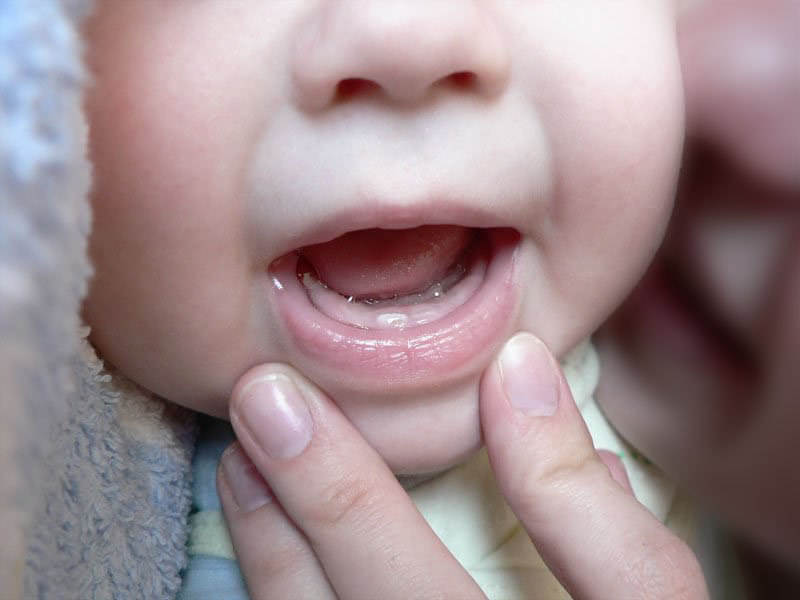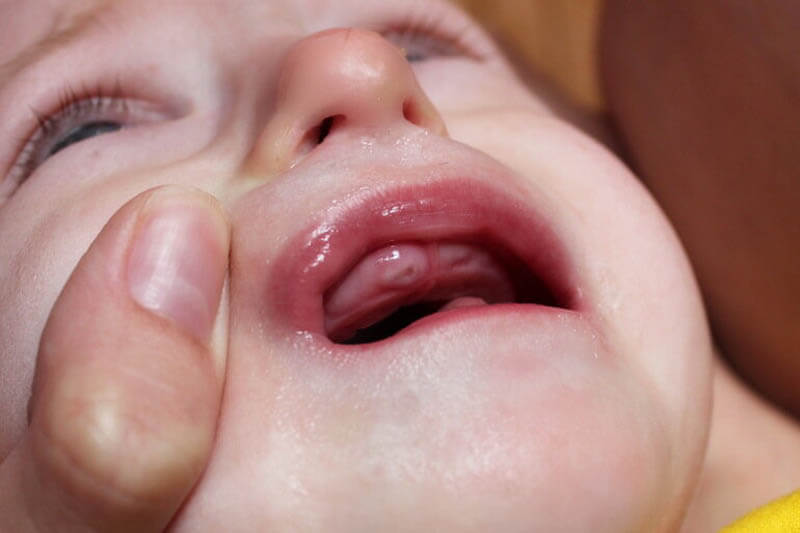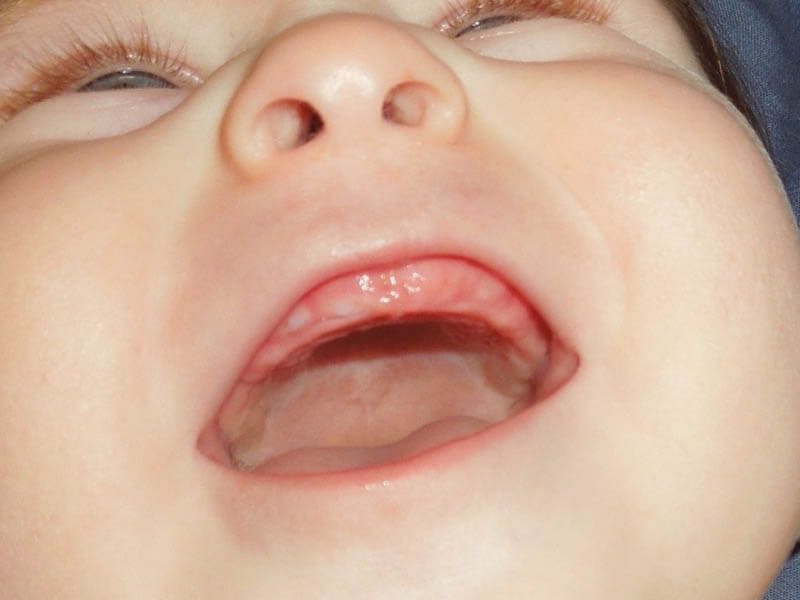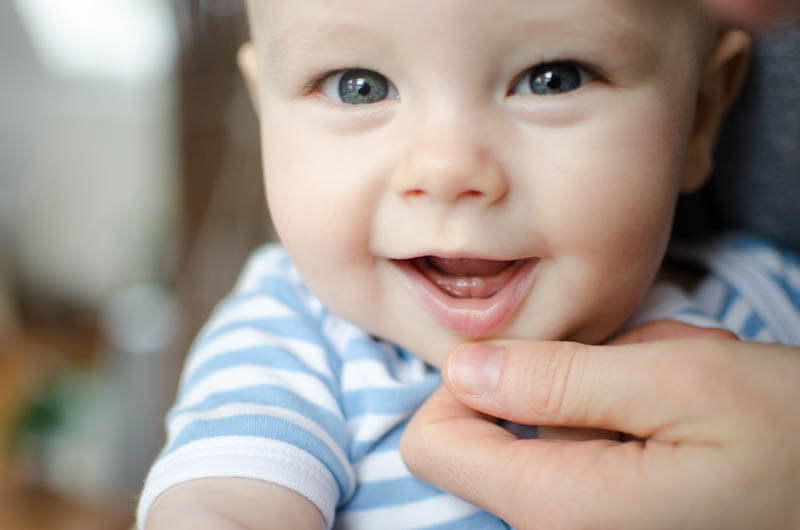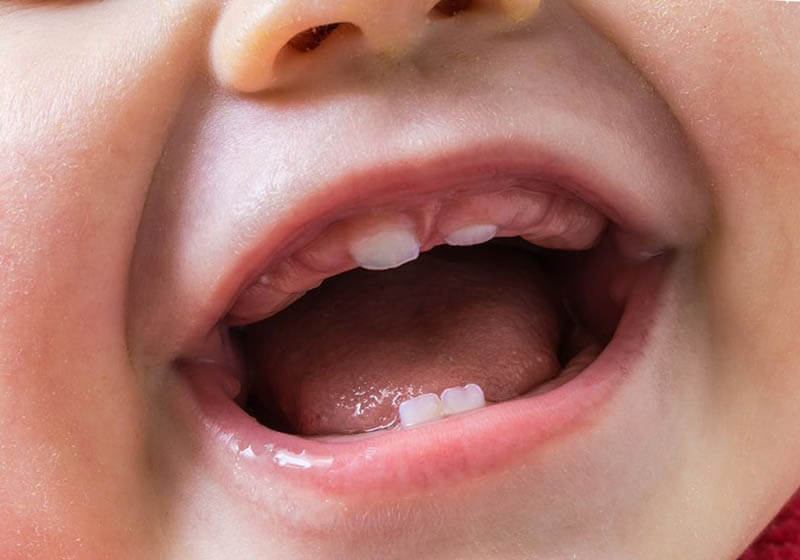Are you looking into your baby’s mouth every day trying to find those long-awaited white pearls? Are you asking everyone “When do baby teeth come in”?
When Do First Teeth Come In?
At around 5 or 6 months parents start actively looking for signs of teeth eruption in their babies as they notice loads of saliva and hands and various objects that are constantly chewed on. So their main question is “When do baby teeth come in?” and whether this is finally it.
Typically, the first tooth appears around the age of 6 months and it is either one or both lower central incisors (front teeth). However, it’s still totally okay if your baby doesn’t have any by their first birthday.

When Do Front Teeth Come In?
The American Dental Association states that lower front teeth start being visible at around 6-10 months old while upper front teeth – at around 8-12 months.
As these are the first teeth to erupt, a baby may be bothered by the pain and need more attention and comfort from their mom and dad. And if during the day the baby gets distracted by bright toys, joyful play, and the world around them, nights can become pretty difficult. Later on, babies get used to the baby teeth eruption pain and can stand it better.
When Do Baby Incisors Come In?
Baby incisors are the first teeth to come in. They have thin cutting edges and work like scissors that help a baby cut food.
Central incisors in the lower jaw are usually the first teeth to erupt in a baby. They usually show up at the age between 6 and 10 months, however, it may take longer in some babies. Then at the age of 8-13 months, central incisors in the upper jaw appear.
Lateral incisors, the teeth on both sides of the central incisors, usually come in the lower and then the upper jaws at the age of 8-16 months.
When Do Baby Canines Come In?
Canines (or eye teeth) are pointy teeth the main objective of which is to tear food. They are located on both sides of the baby’s lateral incisors in the lower and upper jaws. The first to erupt are lower canines, and this happens around the age of 16-23 months.

When Do Baby Top Teeth Come In?
- Top central incisors – 8-13 months;
- Top lateral incisors – 8-16 months;
- The first set of top molars – 13-19 months;
- Top canines – 16-23 months;
- The second set of top molars – 25-33 months.
When Do Baby First Molars Come In?
These are the teeth with a wide and flat surface to crush food. The first pair of molars (or sometimes they are also called premolars) come in at the age of 13-19 months. Usually, the lower ones are the first to erupt, but sometimes it can happen simultaneously with the upper premolars.
When Do Last Molars Come In?
The second set of molars appears at the age of 25-33 months. These are the teeth larger and somewhat wider than premolars with a flat surface to grind food.
When Do All Baby Teeth Come In?
According to the medical information, a child has a full set of primary teeth which counts 20 by the age of 3. If that doesn’t happen, please, address your dentist to work out possible reasons.
What Does It Look Like When Baby Teeth Come In?
What to Do When Baby Teeth Start Coming In?
By the age of 6 months, babies usually start putting everything in their mouths. The level of antibodies the baby receives with breast milk from their mother starts decreasing, making the baby prone to illnesses due to immune system changes. Sometimes the symptoms of illnesses such as rash, runny nose, diarrhea, drooling, changes in eating and sleeping patterns, fever, and others are mistakenly taken for teething. If you see these symptoms in your baby, make sure this is not a viral, bacterial, or middle ear infection.
Usually, teething takes around 8 days (4 days before and 3 days after the tooth appears), and it is a pretty difficult time both for the child and parents. Take the following tips into consideration which will help you ease the process for your baby:
- Dry the skin around the mouth and chin to avoid irritation and rash;
- Gently massage the sore gum with a clean finger or a soft piece of cloth;
- Use chilled (but not frozen!) teething rings and toys to relieve discomfort;
- Give your baby a teething biscuit but make sure it is sugar-free;
- If that doesn’t help a lot, opt for pain relievers that were recommended by your pediatrician.
When to Worry About Baby Teeth Not Coming In?
Although there is a tooth eruption pattern provided by the American Dental Association, it doesn’t matter that all the out-of-step cases are a reason for concern. However, if no teeth have erupted by the age of 18 months or so, it is recommended to turn to a doctor for your child to be fully examined.
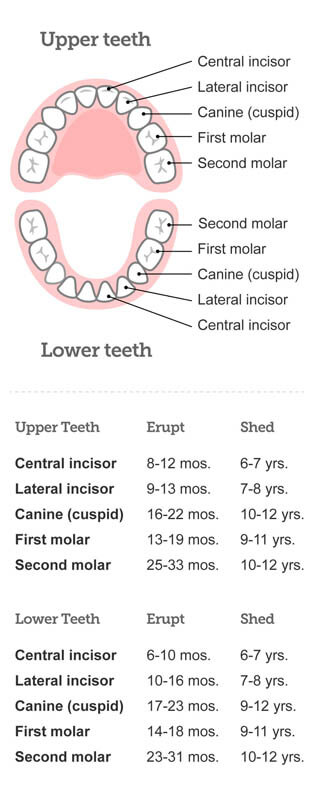
The most common reasons for delayed tooth eruption include the following:
- Premature birth and low weight at birth;
- Genetic abnormalities;
- Developmental disorders;
- Cerebral palsy;
- Anemia;
- Lack of vitamin D;
- Tumors or cysts in the gums;
- Congenital syndromes.
When Do Adult Teeth Come In?
Adult, or permanent, teeth develop in the baby’s jaws when they are in the womb and go on developing after birth. Approximately at the age of 6, the first four permanent molars erupt. They show up behind the existing primary teeth of the kid. Other adult teeth (premolars, canines, and incisors) emerge when the primary teeth were shed – in the same gaps.
Just like with primary baby teeth, permanent ones may appear in a time that differs for each and every child. The general timetable which is followed by dentists and pediatricians looks like this:
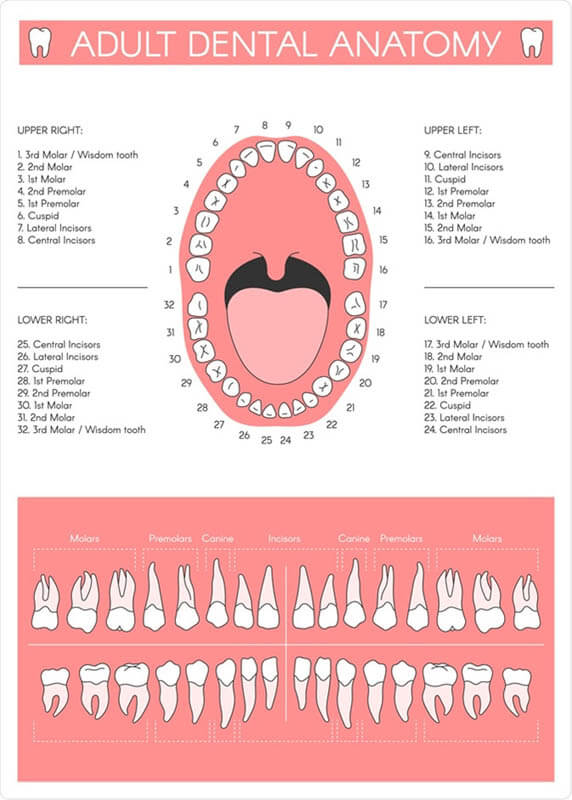
By 21 years old, an adult person has 32 permanent teeth: 16 in the lower jaw and 16 in the upper jaw.
How to Care for Primary Teeth?
Some parents think that caring for primary teeth isn’t that important because they will fall out anyway. However, it is very wrong to think that because baby teeth are prone to decay just like adult ones. Moreover, they also make it possible for children to chew their food and keep the space for future permanent teeth.
To prevent problems with primary teeth, it’s advisable to teach kids oral hygiene and keep to a healthy diet rich in minerals and nutrients. The common rules of good oral hygiene include the following:
- First tooth: Brush with a soft baby toothbrush twice a day;
- 12 months: Make your baby’s first appointment at the dentist’s;
- 18 months: Start adding a small amount (around the size of a pea) of low-fluoride toothpaste and make sure your child doesn’t swallow it;
- 30 months: Start using a dental floss between the teeth that touch;
- 4-5 years: Teach your child to brush their teeth by themselves;
- 6 years: Introduce an adult toothpaste and go on encouraging your kid to spit out the paste and floss their teeth on their own;
- 8 years: By this age, the child will be able to follow all the established rules of oral hygiene unsupervised. However, you should regularly visit a dentist.
All the recommendations and tips listed here are based on the information provided by a range of highly respected institutions, among which are FDA (Food and Drug Administration), CDC (Centers for Disease Control and Prevention), AAP (the American Academy of Pediatrics), and ADA (American Dental Association).
